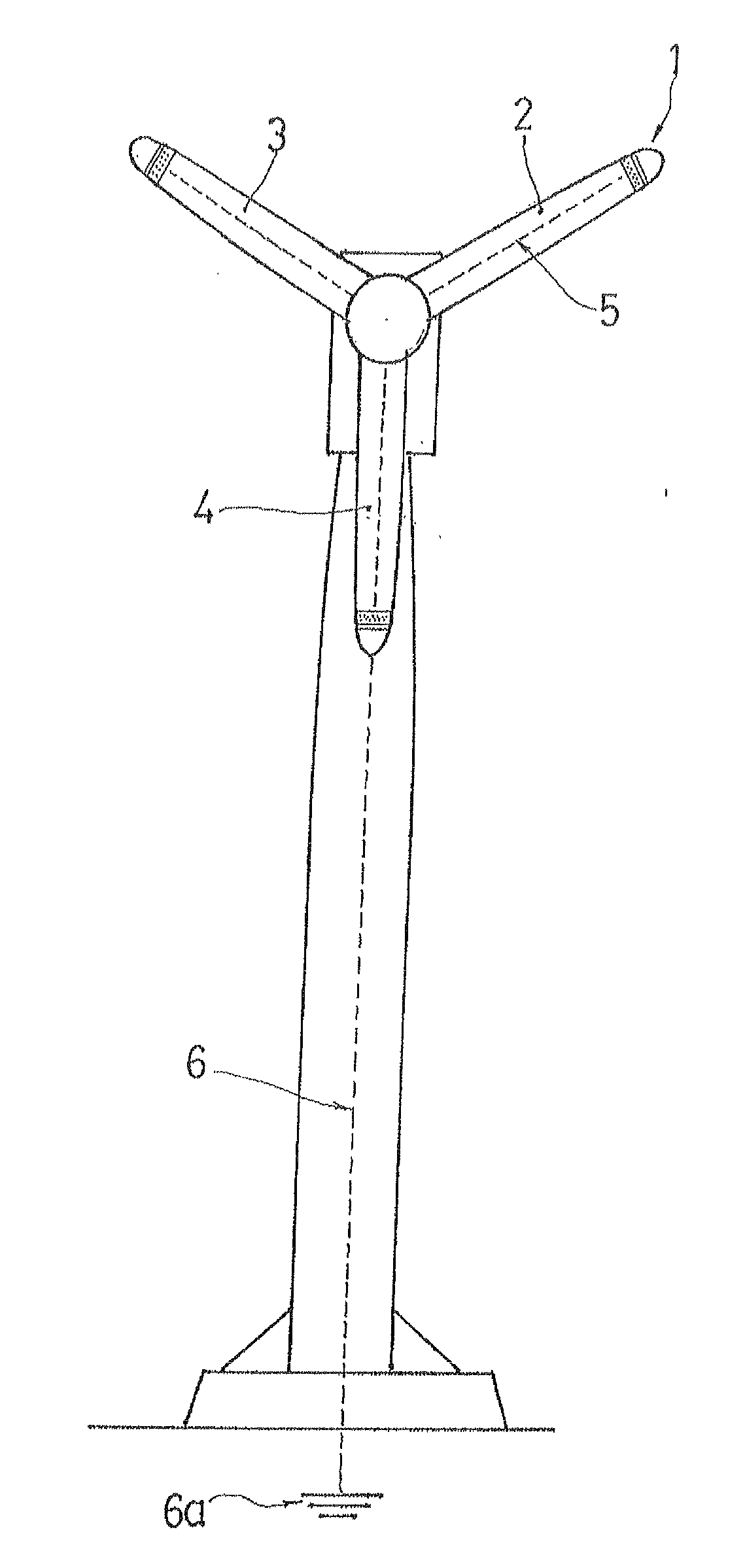Electrostatic charge de-ionizing lightning rod for protection of wind turbine generator blades and wind turbine generator with blades provide with electrostatic charge de-ionizing lightening rod
a technology of electrostatic charge and lightning rod, which is applied in the direction of propellers, seating furniture, water-acting propulsive elements, etc., can solve the problems of blade loss, fire risk, and inability to guarantee a complete protection of people or facilities,
- Summary
- Abstract
- Description
- Claims
- Application Information
AI Technical Summary
Benefits of technology
Problems solved by technology
Method used
Image
Examples
Embodiment Construction
[0028]An electrostatic charge-ionizing lightning rod is identified as a whole with reference numeral 1. The de-ionizing lightning rod (1) is located on the tip of each of the blades (2, 3 and 4). With this location of the de-ionizing lightning rods (1), when the blades of the wind turbine are rotated, the lightning rods remain in the most salient area of a radius of rotation, or in other words of the radius of rotation of the blades (2, 3 and 4).
[0029]Each of the lightning rods (1) is connected through a corresponding conductor (5) to a conductor (6) or a ground circuit (6a) or to a grid of the ground circuit of a wind farm.
[0030]As shown in FIG. 2, the de-ionizing lighting rod (1) includes an exterior electrode (7), an isolating disc (8), and an interior electrode (9). A plurality of the isolating discs (8) can be located between the exterior electrode (7) and the interior electrode (9). The de-ionizing lightning rod (1) composed of the exterior electrode (7), the isolating disc / di...
PUM
 Login to View More
Login to View More Abstract
Description
Claims
Application Information
 Login to View More
Login to View More - R&D
- Intellectual Property
- Life Sciences
- Materials
- Tech Scout
- Unparalleled Data Quality
- Higher Quality Content
- 60% Fewer Hallucinations
Browse by: Latest US Patents, China's latest patents, Technical Efficacy Thesaurus, Application Domain, Technology Topic, Popular Technical Reports.
© 2025 PatSnap. All rights reserved.Legal|Privacy policy|Modern Slavery Act Transparency Statement|Sitemap|About US| Contact US: help@patsnap.com


